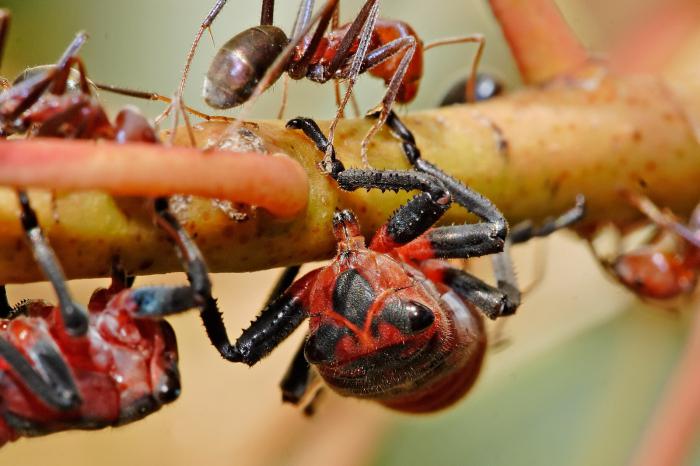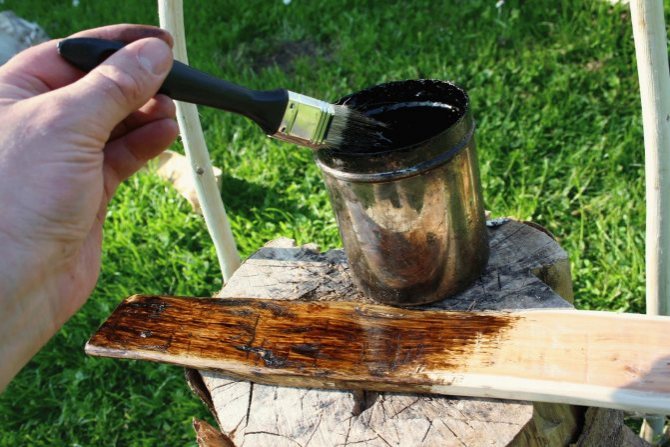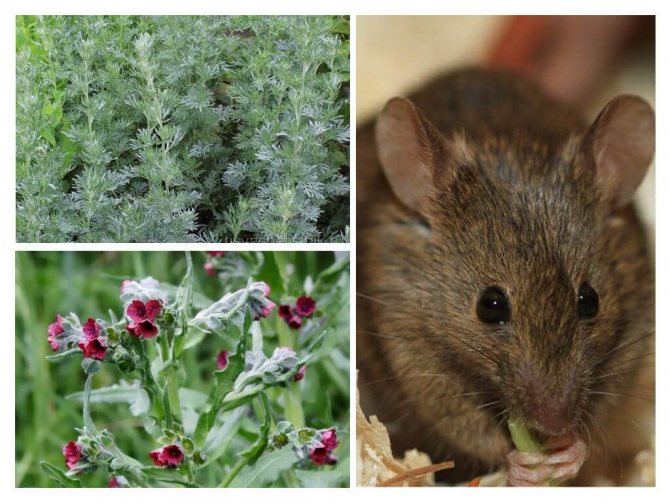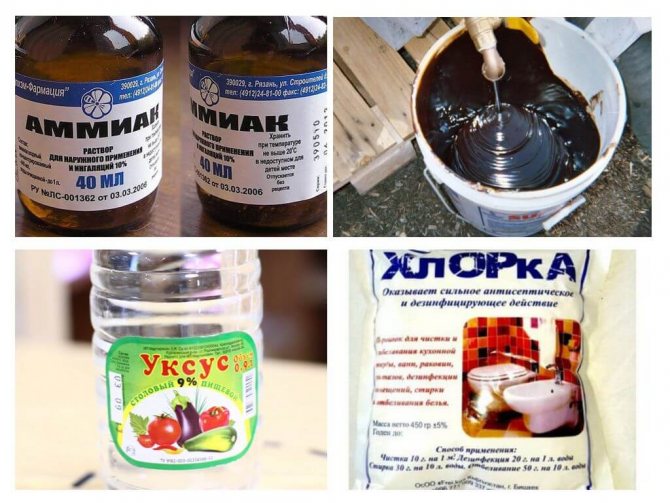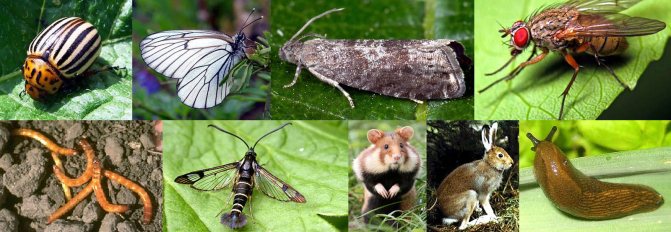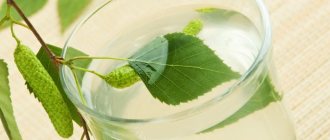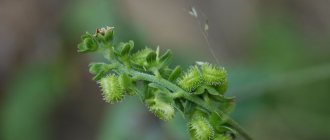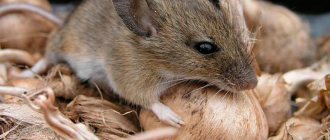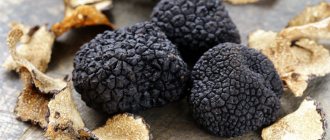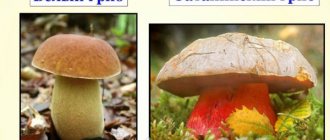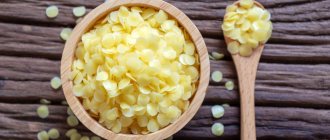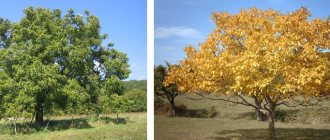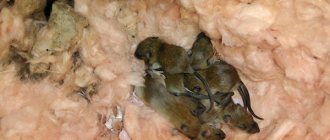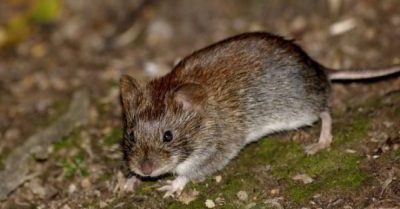
Almost every gardener and gardener knows firsthand the problem of rodent control. These small and nimble animals can cause tremendous damage to the crops stored in the cellar and pantries. They can kill trees and shrubs even in winter.
But what can I say: voracious animals are not averse to feasting on bulbous flowers growing in flower beds! In addition, ordinary people, especially those living in the private sector, suffer from traces of "vigorous activity" of mice, the real invasion of which starts in autumn.
In the fight against mice, all means are good, but this article will introduce you to one hundred percent natural, but no less effective remedy, which will allow you to forget about rodents for a long time.
What is it?
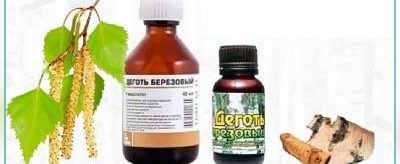

Birch tar is a liquid product of dry distillation of birch bark (light part of birch bark).
Outwardly, tar looks like a thick oily liquid of black color with a bluish-greenish or greenish-blue tint in the light and a very specific odor.
It contains more than 10,000 components that endow birch tar with antiseptic, antiparasitic and antimicrobial properties. Means possessing a whole range of healing properties, can be purchased without difficulty at any pharmacy.
We fight apple tree pests
Most often, the apple butterfly, the common moth and the hawthorn deliver troubles to gardeners. The most dangerous is the moth, since in a particularly "successful" year, its caterpillars can actually devour almost half of the entire crop. The young generation of this pest is hiding under the bark, in the poorly dug ground of near-trunk circles, in the branches and fallen bark. Most often, caterpillars begin to pupate from about mid-May, and this process lasts about 50 days. After the apple tree has bloomed, a massive emergence of the adult (adult) insect begins.
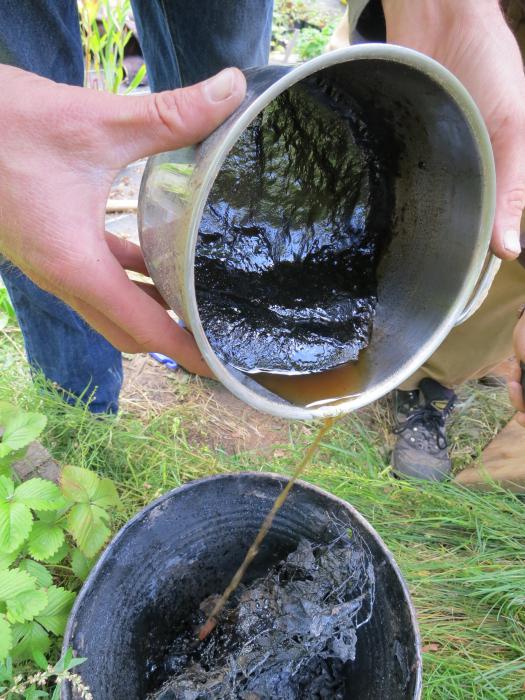

This continues for approximately 19 days. Butterflies lay their eggs by attaching them to the underside of the leaf blade. Two weeks pass, and voracious caterpillars appear from them, which with great pleasure pounce on the fruit that has set. And at this moment birch tar comes to the rescue. Application in horticulture allows you to reliably protect apples from the moth. This will require not only the tar itself, but also water and soap, of which a special solution must be made.
Why don't mice like him?
For mice, an important role in their life is played by sense of smell. They rely on him in finding food, orientation in space, determining the location of the enemy. Even a pair for breeding is selected by rodents by smell. Therefore, harsh and excessively unpleasant odors force the animals to leave the places where they smell “bad” as soon as possible.
As stated above, Birch tar has a specific smell. It is very harsh, extremely persistent, defined in encyclopedias as yuft - the smell of leather, combined tanning, produced from cattle, horses and pigs.
Pests, pear diseases and control measures
Despite its name, the cherry sawer is not averse to feasting on the young leaves of the pear.Like other pests, the larvae of this insect hibernate in the soil near the trees, as well as in the debris that remains during poor autumn garden cleaning. As soon as it warms up and the soil warms up properly, they pupate and then turn into adults. Their emergence coincides with the beginning of flowering of stone fruit crops. They harm both pear and cherry, they do not ignore cherries, quince, raspberries and even strawberries. In principle, caterpillars can "lodge" on almost any fruit-bearing tree.
The use of birch tar from mice in the house and garden
it natural natural remedy able to effectively scare off rodents and other parasites. There are a number of folk recipes that are very simple to prepare and use, but at the same time, they are very effective.
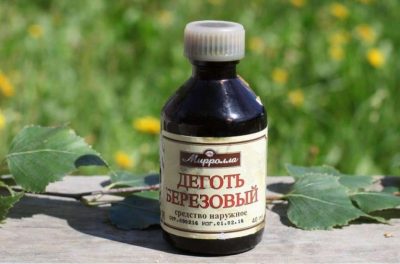

The easiest way: birch tar bought at a pharmacy must be poured into small containers (plastic glasses, cut plastic bottles can be used) and placed around the house (preferably in non-residential premises, for example, a pantry), a summer residence or a basement.- A similar method: the substance can be applied directly around the entire perimeter of the above premises. This method is more effective, but there is one drawback: the corrosive smell of birch tar will saturate the whole room for a long time. And if the container with the substance can be removed at any time, then after applying the substance to the floor or walls, no matter how much mine, the smell will remain.
- To save birch tar, you can mix it with industrial oil (1 bottle for half a liter of oil). It should be noted, despite the decrease in the concentration of birch tar, its effectiveness in the fight against rodents remains the same. With the help of an ordinary paint brush with a long handle (to penetrate into hard-to-reach places), this oil-tar solution must be used to treat all possible routes of mice getting into the house from the outside (vents to the basement and subfloor, cracks in the masonry) and inside non-residential premises (basement, attic) ... Similar processing can be done outside and inside outbuildings.
- To prevent rodents from eating tulip bulbs and other bulbous plants, flower growers do the following: spill a bucket of sand with 200 grams of birch tar, insist for two weeks, periodically stirring the sand for better smelling, and then, when planting, pour it on the bottom of the hole and a little on the bulb itself ...
- To save fruit trees and shrubs, gardeners use an aqueous solution of birch tar (1 tablespoon of the substance per 10 liters of water). With the onset of cold weather, the near-trunk zones of trees and pieces should be mulched with sawdust soaked in a similar solution.
- Also, when protecting trees and shrubs, you can use another option: soak a medical bandage with birch tar and wrap their trunks with it.
It is better to prevent any disaster than to eliminate its consequences later. Invasion of mice Is a disaster that can be easily prevented in a safe, humane and economical way - using birch tar from them.
Preparation of working solution
Tar dissolves poorly in water. To prepare a working mixture, it must first be combined with alcohol or alkali. The best method is to dilute the substance with a soapy suspension.
It makes no sense to make solutions with different concentrations of the working substance for use on strawberries, apples or potatoes. You can make a mixture according to one recipe, and process the entire area from mice, harmful beetles, butterflies, spider mites, slugs, moles, ants, and hares.
Comment! It is better to use ordinary birch tar in the garden, and not birch bark (expensive and ineffective) or sapropel.
Classic solution
First, 50 g of soap (household or tar) is rubbed on a grater, soaked in warm water. Then pour 2 tablespoons of tar into it, stir well. Diluted in a bucket of water.
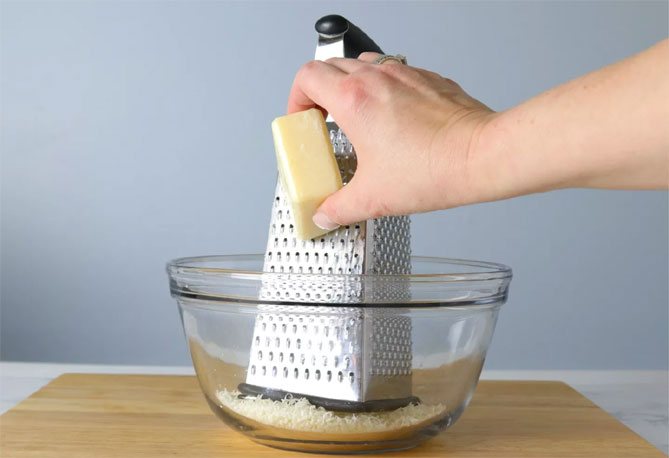

With this solution, you can spray plants, soil, soak mulch and rags.
A powerful universal remedy
The following mixture helps with almost all pests:
- water - 10 l;
- concentrated solution of laundry soap - 1 glass;
- tar - 2 tbsp. l .;
- ammonia - 2 tbsp. l .;
- iodine - 1 tsp;
- coniferous oil (any) - 1 tsp;
- boric acid - 0.5 tsp.
Stir the mixture well. Dilute a half-liter jar of the mixture in 10 liters of water, apply on all crops as a universal remedy for pests, late blight, powdery mildew.
Comment! The concentration of each substance in the working solution will be so low that even flowering plants can be treated with it.
Useful video
How to get rid of mice with birch tar in the video below:
Mice are guided in their activity by sense of smell. They find food by smell, identify the enemy, navigate in space, look for a pair for reproduction. The smell attracts rodents or repels. This property is used against them by a person, if it is decided to wage a war with folk means. In addition to the smell, mice are also afraid of sound. If you understand all these subtleties, you can get rid of pests in a short period of time, prevent them from returning to their former places. What are mice afraid of?
Ants
Birch tar will help to deal with the nearest. To ward off them, grazing their "cows", from garden plantings, wrap tree trunks and bases of shrub branches with rags dipped in clean birch tar.


Ants and aphids are inseparable
And "garden" ants can be driven out of the beds in a different way: pour 1-2 ml of a pharmaceutical preparation on top of the anthill. Insects will immediately begin to pack their luggage and go on a long journey.
What smells are mice afraid of?
Experienced housewives know what smell mice do not like. Through long-term observation, they found that rodents do not tolerate the aromas of certain plants, spices, synthetic fragrances and even essential oils. Also, the mouse is well scared off by the natural smells of animal enemies (cats, snakes, hedgehogs).
Plants
Some plants not only scare off rodents with a smell, but also affect their well-being.
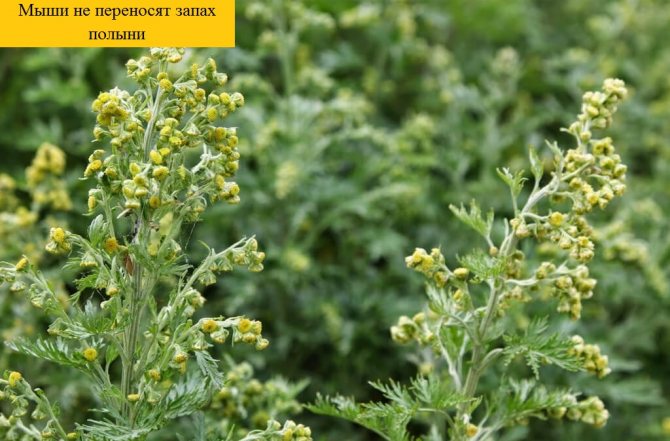

The following representatives of the flora are popular:
- Aroma of wormwood. This herb has a strong, persistent scent that mice cannot tolerate. Freshly picked branches of wormwood are spread around the house, especially in those places where mice left their feces. And also this plant is used to fumigate living quarters. Dry twigs are set on fire and moved from room to room. Smoke seeps into the most distant corners, chasing rodents away.
- Tansy. This plant resembles camphor with its aroma. Bouquets are made from it and laid out in different rooms, as well as in basements. This natural insecticide repels pests well.
- Black elderberry. The root of this plant contains hydrocyanic acid, which is poisonous to both animals and humans. Elderberry branches emit a scent that a mouse cannot tolerate. They are laid out in cellars and pantries with food.
- Blackroot or dog tongue. It is a poisonous weed that helps in the fight against rodents and garden pests. Affects the nervous system of mice. They, hearing him at a fairly large distance, try to leave the room. People practically do not feel this aroma, and it just drives mice crazy.
- Marsh Ledum. It is a plant that contains poisonous oils. If the mouse comes into contact with the branches of wild rosemary spread out in the corners of the room, then it dies in the near future. And others, smelling it from afar, in a hurry leave the dwelling.
- Chamomile. The smell of this medicinal plant is liked by many people, but mice absolutely cannot tolerate it. Dried bouquets of chamomile are laid out next to food supplies.And also chamomile tincture is added to the water during cleaning.
Some of the listed plants are appropriate for planting in a personal plot. When laying them out in a house or apartment, it is important to evaluate where pests most often run and leave bunches of plants mainly in those places.


If it is difficult to find fresh plants, then you can buy a herbal mixture or individual extracts, tinctures at the pharmacy. They are equally effective.
If dry raw materials are used, then it will be needed 2-3 times more than fresh.
If the hostess prefers poisonous plants, then she must protect herself and think about her health. It is advisable to use rubber gloves, a respirator and protective clothing.
At the end of rodent control work, the protective equipment should be thrown away, burned or washed very well.
Spice
If there is no desire to tinker with plants, then food spices available in the kitchen of any housewife can become an alternative aromatic means of struggle.
Mice will bypass food supplies if they sense the following odors:
- clove;
- coriander or cilantro;
- chili peppers;
- sage.


Mice also dislike bay leaves. It is effective to use these spices whole or chopped. A long-lasting aroma appears that repels rodents if sage leaves are burned. The smell of coffee, especially freshly roasted coffee, also repels pests.
Pungent-smelling liquids
Vole mice do not tolerate the smell of the following liquids:
- Ammonia solution. Fill a saucer with ammonia and place it near the mink. Also, this tool is used to wipe various surfaces where rodents have been seen. To prepare a working solution, 10 ml of ammonia is combined with 1 liter of water. This smell reliably scares off mice.
- Vinegar. This product is available in every kitchen. The saucer is filled with pure vinegar or diluted with water and placed near the minks. Also, a thorough cleaning of the room is done with a vinegar solution. The product will effectively scare away mice if its aroma persists for a long time.
- The smell of tar. People also do not tolerate this aroma, so this method of scaring away mice is more suitable for non-residential premises. If the housewives want to use it at home, then for a while, you can agree to live with relatives or friends. Moisten a rag with tar, and then put it where rodents are most often. Similar deterrent properties are possessed by: gasoline, kerosene, oil for cars.
- Chlorine smell. Products with a strong chlorine aroma are not liked by any pests. Products containing chlorine are used for cleaning floors 3-4 times throughout the week.
Precautions
Concentrated birch resin is classified as a third hazard class drug. Therefore, it is advisable to store bubbles with tar in an inaccessible place, it is better to close them on a turnkey basis. In addition, you cannot keep other biological products close to them (it is better not to store them even in the same room).
Birch Resin - Wood Tar
When mixing the solution and processing the landings, one mask is not enough, you need to use a respirator. A drop of the product that accidentally gets on the skin must be immediately wiped off (wiped off) with alcohol and then washed off with soapy water.
There are no sterile conditions for farming. To preserve a productive garden, sooner or later you have to resort to medications and insecticides. Among them there are both biological and chemical (often poisonous) agents. Depending on the scale of the defeat, everyone makes a decision on the choice of one or another method.
Birch tar in the garden from pests is the most natural and, as practice shows, quite effective. If you follow the rules of mixing, processing and storage, then it is quite capable of helping in the fight against known pests.
Saturated resin is a hazard class 3 agent and has many harmful components in its structure:
- If you need to keep the drug for a long time, it is worth allocating a turnkey box in order to protect children and animals from contact.
- In addition, biological products are not stored next to tar, even in the same room.
- In order to protect the respiratory tract from resin vapors, a gauze bandage is not suitable, it is worth getting a respirator.
- Before proceeding to mixing, you should prepare a bottle of alcohol. If the resin accidentally gets on the surface of the skin, the area is wiped with alcohol, and then washed off with soap and water.
Note! When purchasing seedlings of plants, it is important to familiarize yourself with all possible risks. When gardening or growing vegetables, you need to understand that planting is not the most difficult stage. Having studied the information in detail, can a pest infestation be avoided? resorting only to safe measures that cannot harm the quality of the crop.
Mint against mice
Safe and even pleasant for humans, the smell of mint can be a great solution when you need to scare away a mouse. This plant can be used fresh, as a tincture or as an essential oil.
Regardless of the chosen method of application, effectiveness is not lost.
Peppermint
One of the most effective plants against rodents is peppermint. Freshly picked mint leaves are laid out around the perimeter of the room.
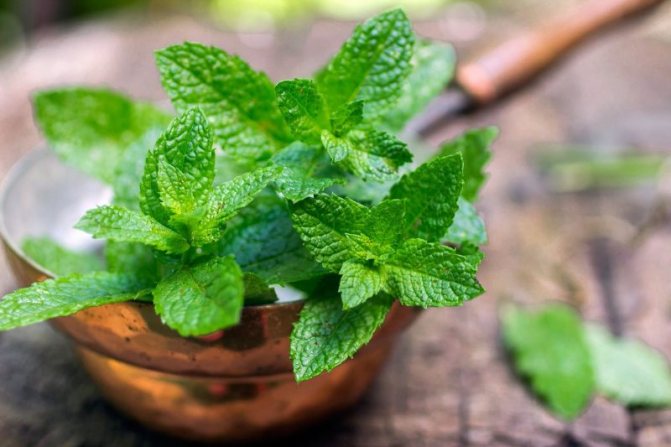

Some also practice using a dried plant. Put the mint in bags and hung around the house near air vent holes or other places, where the rodent can supposedly climb.
Peppermint tincture
Some housewives also actively use peppermint tincture to treat the room. They dilute it with water (1: 1), place it in a spray bottle.
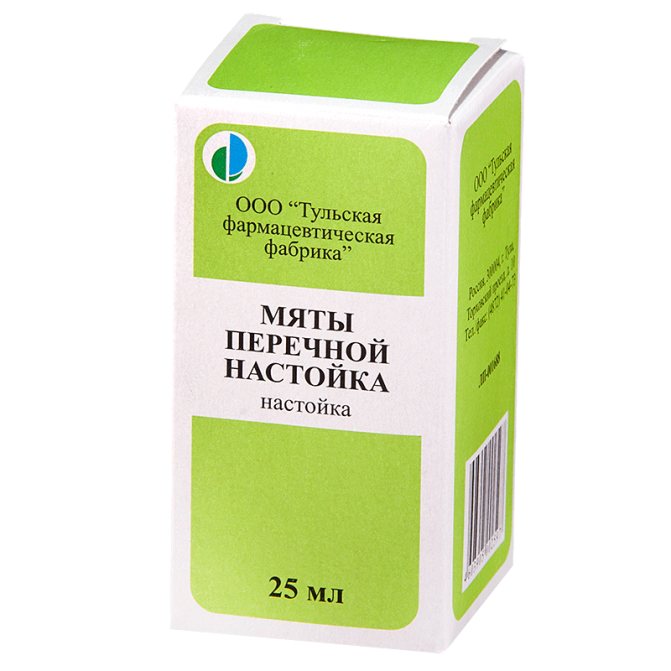

They use this mint spray to treat cabinets and surfaces where rodents are most often.
Peppermint oil
If there are a lot of mice bred, then some try to create an aura of a persistent mint smell using essential oil. Mint oil is dripped into an aroma lamp and a candle is set on fire.
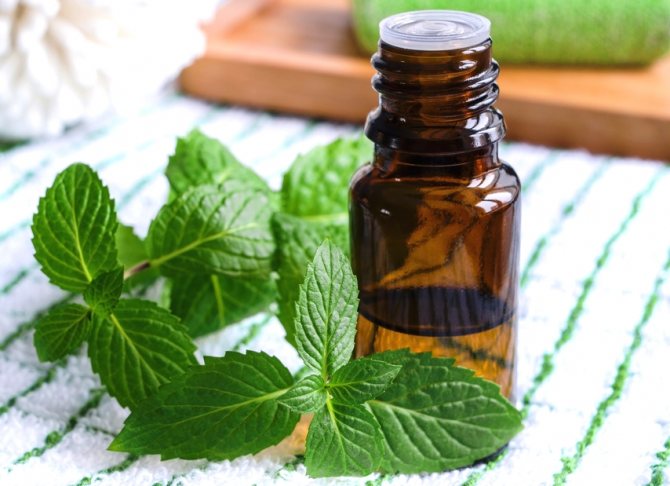

The scent, pleasant for humans and disgusting for mice, will float in the air for a long time. And the second option is 2-3 drops of oil are dripped onto a cotton wool and laid out in different corners of the room.
Hawthorn
Hawthorn larvae "wield" on apple trees, pears, plums, cherries, apricots and other crops of the Rosaceae family, actively eating buds, young leaves and buds.
Hawthorn Larva
In order to protect the garden from this harmful insect, carry out a series of treatments on the trees with a solution based on 20 ml of tar, 1/2 bar of soap and 10 liters of water. The first treatment is carried out in the "green cone" phase, the second - shortly before flowering, and the following immediately after flowering with an interval of 2 weeks (depending on the presence of caterpillars).
How to get rid of the smell of mice in the house
If the unpleasant smell is provoked by a mouse corpse, then the owners' task is to find it and eliminate it. Most often, the mouse dies under the floor of the house or between the ceilings of the walls. To remove them, you have to disassemble the floor or break out part of the wall.
If you still can't get the rodent, then they get out of the situation by constant airing. This has to be done until the corpse decomposes and stops stinking.
If the feces of mice create an unpleasant smell, then they resort to using folk remedies or store drugs.


Mouse odor is well eliminated with the help of such means:
- They take a piece of cotton wool and set it on fire. Leave it to smolder with closed windows and doors for 2-3 hours.
- They wash the floor and other surfaces with vinegar solution (80 ml of table vinegar is taken for 1 liter of water). And also such a solution is sprayed on walls and furniture.
- The suspected strokes of the mice are treated with whiteness or other chlorine-containing agents.
It is recommended that the living area be thoroughly cleaned and ventilated every 60 minutes.Bags of table salt are also laid out in the rooms. It is able to absorb unpleasant odors and also has a bactericidal effect.
If improvised home remedies do not justify themselves, then you can resort to store-bought chemicals (Medifox Dez, Petrospirt, Chlorapin).


Chemicals are great because they don't just mask unpleasant odors. They contain active ingredients that destroy pathogenic bacteria.
To completely eliminate the mouse odor, use chemical cleaning agents at least 2 times a week.
The mouse is afraid of various scents. To completely get rid of rodents, it is important to choose the right repellants. When thinking about what to use, the hostess must take into account her family composition, as well as the room where the fight will be fought.
It is also important to remember about preventive measures. If you regularly keep your home clean, the mouse will lose interest in it.
If you find an error, please select a piece of text and press Ctrl + Enter. We will definitely fix it, and you will have + karma
«>
Whom does tar scare away
As a repellant, tar in the garden and garden is most effective against objects of elimination that have a sharp scent and completely or partially lead an underground lifestyle, because in the soil, the active substances of the tar remain longer. These factors mutually reinforce each other. Based on this, the repelling effect of tar on different groups of pests is divided into 3 categories:
- Strong - lasts more than 30 days. As a rule, one treatment per season is enough for the elimination objects to self-remove from the site in all directions;
- Medium - lasts up to 30 days, but is stable;
- Weak - lasts less than 30 days. Decreases or stops in cold weather.
Diseases and pests of the plum
On the plum, the plum moth is especially rampant. There are Trans-Baikal and Central Asian types, but, by and large, the only difference is in the way of wintering. The first type uses fallen leaves and branches for this, and can hibernate in the cracks of the tree itself. The Central Asian moth spends winter under a layer of bark. Be that as it may, but adult butterflies appear in early June. By the middle of the month, they manage to lay a bunch of eggs in the inflorescences. Coming out of the egg, the caterpillar begins its meal, first destroying the plum bone, and finally completely eating the pulp. As a result, a kind of sac remains of the fetus, completely filled with the excrement of the pest.
To prevent such an unpleasant phenomenon, it is necessary at the beginning of May to thoroughly spray the plum with a solution of tar in soapy water, and a week later to do it again. Do the same if your plum plantation is "attacked" by the perforated spot of stone fruit crops. In this case, birch tar, the use of which we have just described in spring gardening, helps to save almost the entire crop without resorting to the use of aggressive chemicals.
